
Coral snakes are a large group of elapid snakes that can be divided into two distinct groups, the Old World coral snakes and New World coral snakes. There are 16 species of Old World coral snakes, in three genera, and over 65 recognized species of New World coral snakes, in two genera. Genetic studies have found that the most basal lineages have origins in Asia, suggesting that the group originated in the Old World. While new world species of both genera are venomous, their bites are seldom lethal; only two confirmed fatalities have been documented in the past 100 years from the genus Micrurus. Meanwhile, snakes of the genus Micruroides have never caused a medically significant bite.

Micrurus is a genus of venomous coral snakes of the family Elapidae.

Masticophis is a genus of colubrid snakes, commonly referred to as whip snakes or coachwhips, which are endemic to the Americas. They are characterized by having a long, thin body and are not dangerous to humans.

Tantilla is a large genus of harmless New World snakes in the family Colubridae. The genus includes 66 species, which are commonly known as centipede snakes, black-headed snakes, and flathead snakes.
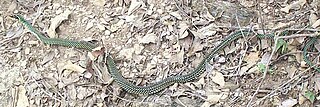
Drymobius is a genus of colubrid snakes commonly referred to as neotropical racers, which are endemic to the Americas. There are four species recognized in the genus.

Ficimia is a genus of colubrid snakes commonly known as hooknose snakes or hook-nosed snakes, which are endemic to North America. There are seven species within the genus.

Epictia is a genus of snakes in the family Leptotyphlopidae. The genus is native to South America, Central America, and Mexico.
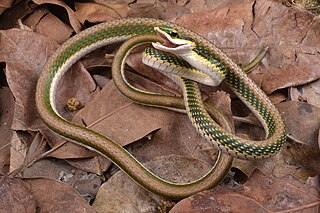
Leptophis mexicanus, commonly known as the Mexican parrot snake, is a species of medium-sized slender snake in the family Colubridae. The species is endemic to the Americas.
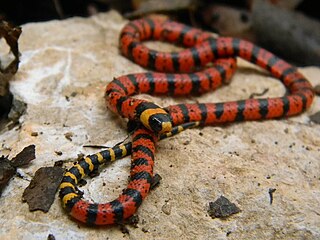
Micrurus diastema, commonly known as the variable coral snake, is a species of venomous snake in the family Elapidae. The species is endemic to southeastern Mexico and northern Central America. There are seven recognized subspecies.

Dipsadinae is a large subfamily of colubroid snakes, sometimes referred to as a family (Dipsadidae). They are found in most of the Americas, including the West Indies, and are most diverse in South America. There are more than 700 species.

Coniophanes piceivittis, known commonly as Cope's black-striped snake, is a species of small snake in the subfamily Dipsadinae of the family Colubridae. The species is endemic to Central America and Mexico, and is found in a wide range of habitats.

Conophis is a genus of snakes in the subfamily Dipsadinae of the family Colubridae. The genus is endemic to Mexico and Central America.
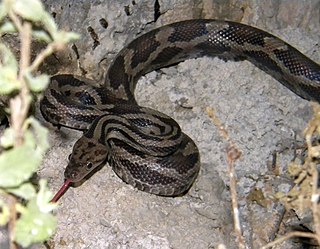
The yellow-red rat snake is a species of snake in the family Colubridae. The species is endemic to Mexico and Central America. Three subspecies are recognized.
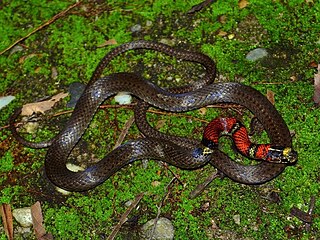
Scaphiodontophis annulatus, commonly known as the Guatemala neckband snake, is a species of snake in the family Colubridae. The species is native to southern Mexico, Central America, and Colombia. There are four recognized subspecies.
Coniophanes bipunctatus, the two-spotted snake, is a species of snake in the family Colubridae. The species is native to Mexico, Guatemala, Honduras, Belize, Nicaragua, Costa Rica, and Panama.
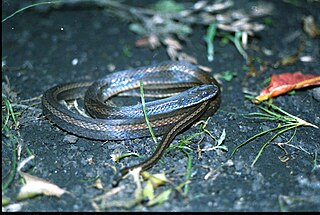
Coniophanes fissidens, the yellowbelly snake, is a species of snake in the family Colubridae. The species is native to Mexico, Guatemala, Honduras, Belize, Nicaragua, El Salvador, Costa Rica, Panama, Ecuador, Peru, and Colombia.

Coniophanes imperialis, the black-striped snake, is a species of snake in the family Colubridae. The species is native to Texas in the United States, Mexico, Guatemala, Honduras, and Belize.

















